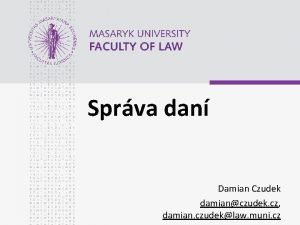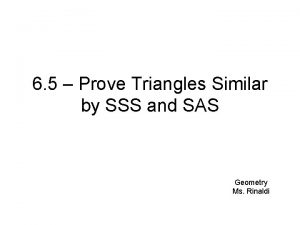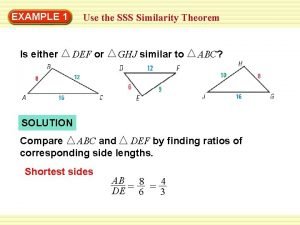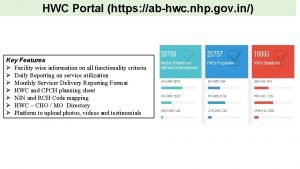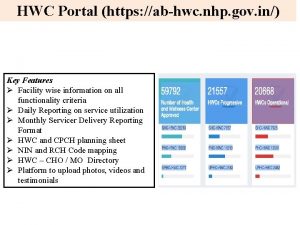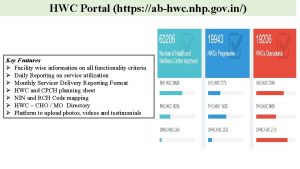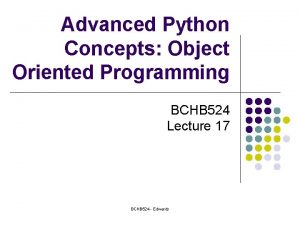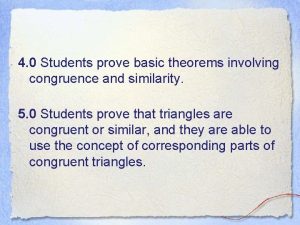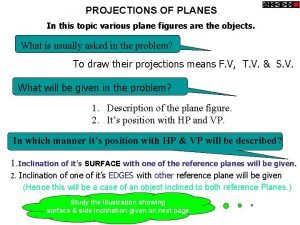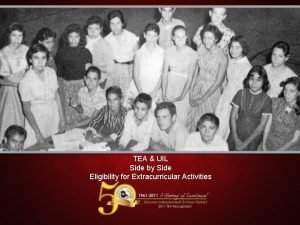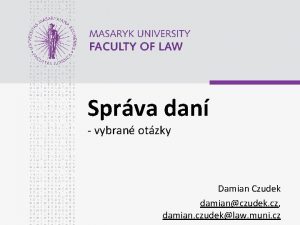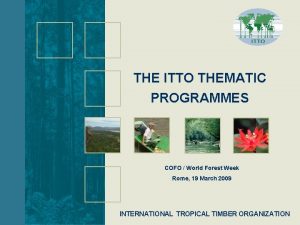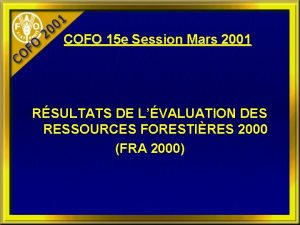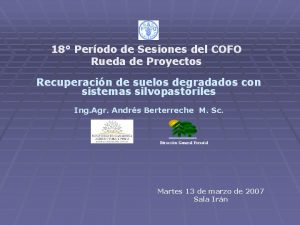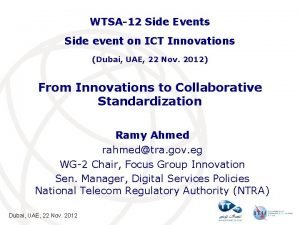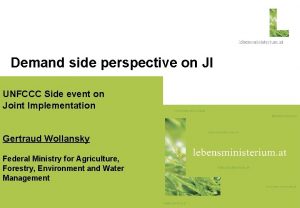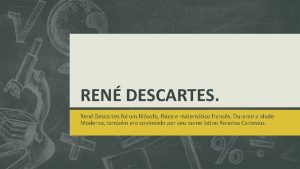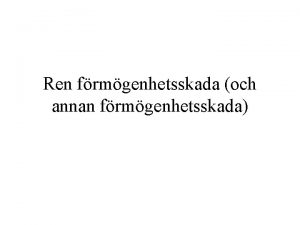HWC Side Event COFO 2010 Ren CZUDEK A














- Slides: 14

HWC Side Event – COFO 2010 René CZUDEK A Human Wildlife Conflict Toolbox Or How to address local needs at grass -root levels? Sébastien LE BEL

HWC Side Event – COFO 2010 I. A classic case study: “They are again elephants in the field”. Sébastien LE BEL

Two teams arrived: • One to chase the elephant, • One to kill it. What is the problem? ?

Conflict between humans and wildlife ? ? HWC case or What is underlying Conflict between humans about wildlife ? ? What are the deep roots • Landuse? • Wildlife benefit sharing? • Bush meat? • Power relation?

Level of conflict… (1) To understand (2) To analyze • listening • brainstorming, exploring options • discussing • shearing experiences • understanding • binding of the parties • acknowledging (3) To mitigate Time… Neutral Conflict Resolution • Options • ACTION HWC toolkit

HWC Side Event – COFO 2010 II. Before opening the “CIRAD-FAO HWC toolkit”. Sébastien LE BEL

• • • YES Training of trainer. Contain a process which needs to be followed for a max of efficiency. Local solutions as worldwide recommendations. Can be adapted to national context. Currently tested in Southern Africa Available in 3 versions NO • Not a magic wand. • Not to be handover without any training. • Not frozen and its content might change by adding or removing tools.

HWC Side Event – COFO 2010 III. HWC Toolkit: Content & Guideline. Sébastien LE BEL


1. 2. 3. 4. 5. 6. 7. HWC Toolkit divided in six major sections WELCOME to the Human Wildife Conflict (HWC) Toolkit. MANUAL: Instructions for using this e-toolkit. POLICY: What is legal and what is not considering PAC. REPORTING: Important forms on reporting HWC incidents. ENVIRONMENT: The impact of HWC on all aspects of your community. WILDLIFE: Key wildlife species involved in HWC. PAC Options: Combating HWC. ü Awareness ü Access prevention ü Drive them away ü Translocation ü Lethal measures User friendly >> Start with Policy and navigate to specific country in Policy. >> Do the same as in Policy with Reporting. >> Go to Environment, choose a group affected by PAC (People, Village, Livestock, Water, and Crops), >> Choose the Problem Animal in question, >> Choose the Tools to be used as mitigation measures.

HWC Side Event – COFO 2010 IV. Way forward. Sébastien LE BEL

• To improve the current version of the HWC toolkit. – Duplication, dissemination, M&E. • To investigate the effectiveness of new deterrent technology and under which circumstances are they adopted. – e. g. Long term impact of chili on crop raiders.

• To monitor the long term impact of HWC strategy – Improving HWC requires an understanding of complex interrelationships and feedbacks between drivers of poverty, socioeconomic and political conditions and ecosystem services. – Bayesian hierarchical modelling (BHMs) provide tools to synthesis data and produce models – BHMs brings together stakeholders and scientists to discuss and agree the patterns of causal relationships between the different components of the system and the key drivers. – Two distinct roles for Bayesian Belief Networks (BBNs): at the exploratory stage, bringing together stakeholders and scientists, before carrying out more sophisticated modelling using BHMs and second as a practical decision support tool as a project output.

Tatenda!! sebastien. le_bel@cirad. fr
